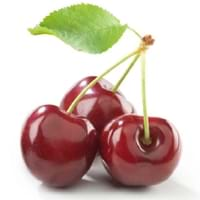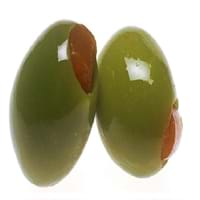Health Benefits
Arthritis prevention, Cancer prevention, Gout treatment, Heart care, Muscle pain relief, Regulation of heart rate, Treatment of alzheimer's disease
Cancer prevention, Helps in cartilage regeneration, Prevents macular degeneration, Treatment of alzheimer's disease
General Benefits
Anti oxidant properties, Anti-inflammatory properties, Controls blood pressure, Cures headache, Sore throat treatment
Anti oxidant properties, Anti-inflammatory properties, Boosts immune system, Controls blood pressure, Digestive aid, Maintains healthy cholesterol level
Skin Benefits
Anti-aging benefits, Brightens and lightens complexion, Skin rejuvenation, Treatment of dark spots
Hydrates skin, Skin rejuvenation, Treatment of skin diseases
Hair Benefits
Acts as moisturizer, Protects hair, Regulates hair growth, Rejuvenates scalp
Acts as moisturizer, Good conditioner, Regulates hair growth
Allergy Symptoms
Anaphylaxis, Breathing difficulty, Fainting, Hives, Itching, Nasal congestion, Nausea, Swelling of mouth, tongue or lips, Tingling sensation in mouth, Vomiting, Wheezing
NA
Side Effects
Abdominal cramps, Allergic reaction, Bloating, Intestinal gas
Affects blood glucose levels, Dizziness, Stomach pain
Best Time to Eat
Best if taken as a breakfast (or empty stomach), As a snack in the late afternoon, Don't eat after meal, Morning time (before lunch)
Hardly eaten raw, Olive oil is consumed for many purposes.
Vitamin B5 (Pantothenic Acid)
Vitamin C (Ascorbic Acid)
Vitamin K (Phyllochinone)
Phytosterol
Not Available
Calories in Fresh Fruit with Peel
Calories in Fresh Fruit without Peel
Not Available
Not Available
Calories in Frozen Form
Not Available
Type
Tree fruit
Tree fruit
Season
Summer
Spring, Summer
Varieties
Vandalay, Stella, Tehranivee, Sonata, Whitegold, Symphony, Blackgold, Sunburst, Lapins, Skeena and Sweetheart
Manzanillo, Sevillano, Mission, Ascolano, Barouni, Gordal, Rubra and Picholine
Color
Red
Black, Green, Purple, Yellow
Origin
Europe, Western Asia
Eastern Mediterranean Region
Soil Type
Sandy
Well-drained
Climatic Conditions
Cold
Warm to hot climate
Facts about
- The word cherry is derived from the Turkish town of Cerasus.
- In Oliver, British Columbia, a pie of 39,683 pounds was baked which holds the record of biggest cherry pie.
- National cherry cheese cake day is on April 23.
- In ancient Greece, 1st eye shadow was made by adding olive oil in ground charcoal.
- The most expensive form of olive oil is Extra Virgin.
- Largest type of olive tree is known as donkey tree & smallest one is called bullet.
Top Producer
Turkey
Spain
Other Countries
Austria, Chile, China, France, Germany, Greece, Iran, Italy, Poland, Romania, Russia, Serbia, Spain, Syria, Ukraine, United States of America, Uzbekistan
Algeria, Egypt, Greece, Italy, Morocco, Portugal, Syria, Tunisia, Turkey
Top Importer
Russia
United States of America
Top Exporter
Poland
Italy
Botanical Name
Prunus avium
Olea europaea
Synonym
Not Available
Not Available
Subkingdom
Tracheobionta
Tracheobionta
Division
Magnoliophyta
Magnoliophyta
Class
Magnoliopsida
Magnoliopsida
Species
P. avium
O. europaea
Compare Sweet Cherry and Olive
It is important compare Sweet Cherry and Olive as both the fruits have a different nutritional value. Their comparison can be done on the basis of their vitamin and mineral content, calories, benefits as well as characteristics, making it easier for us to choose the best fruit for our diet. Their general health benefits are as follows:
Sweet Cherry Benefits: anti oxidant properties, anti-inflammatory properties, controls blood pressure, cures headache and sore throat treatment.
Olive Benefits: anti oxidant properties, anti-inflammatory properties, boosts immune system, controls blood pressure, digestive aid and maintains healthy cholesterol level.
Fruits are also used as a remedy for various hair problems. The hair benefits of Sweet Cherry are: acts as moisturizer, protects hair, regulates hair growth and rejuvenates scalp and hair benefits of Olive are: acts as moisturizer, good conditioner and regulates hair growth. Some fruits are known to cause allergic reactions. The allergy symptoms of first fruit are: anaphylaxis, breathing difficulty, fainting, hives, itching, nasal congestion, nausea, swelling of mouth, tongue or lips, tingling sensation in mouth, vomiting and wheezing and the symptoms of second fruit are: na. Get sorted Sweet Cherry vs Olive comparison with the help of fruit comparison tool by fruitvs.com.









